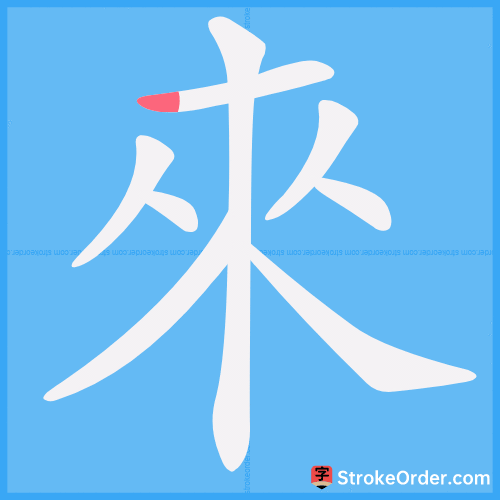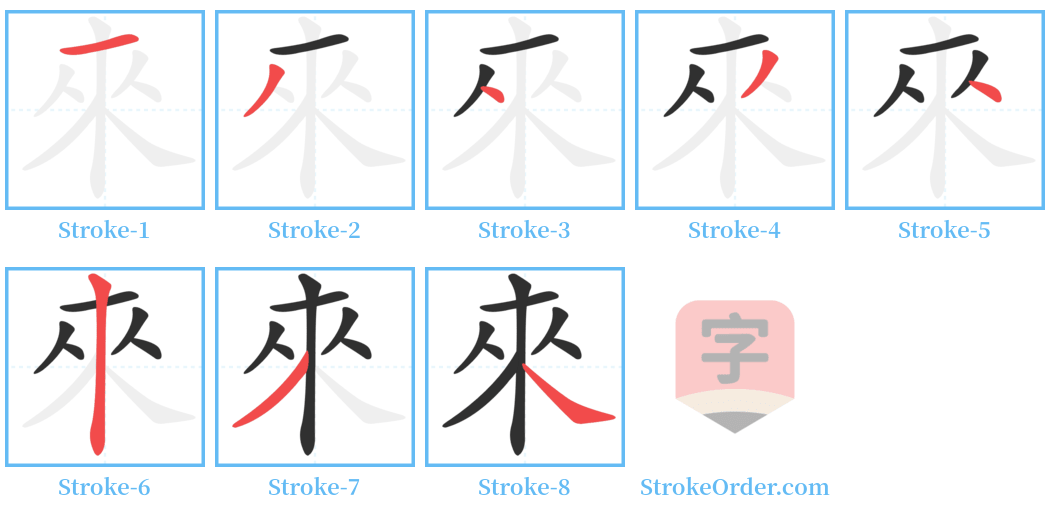來 Stroke Order
Animated Stroke Order of 來

Stroke Order Diagrams for 來

Step-by-Step Handwriting Guide for 來

Learn to Write Chinese Characters with Video Tutorials
Watch the video of writing the Chinese character "來", learn the correct stroke order (笔顺) of the character "來", and master the standard way of writing the character "來".
Free Printable Handwriting Practice with Stroke Order: 來
Printable Writing Practice Worksheet of "來" in Portrait Orientation (Tian Zi Ge)

Printable Writing Practice Worksheet of "來" in Landscape Orientation (Tian Zi Ge)

Information of 來
Pinyin
lái
Radical
亻
Strokes
8 strokes
Usage
★★★
Definition
to come
來
lái
1. 小麥。
Wheat.
2. 由彼至此;由遠到近。與“去”、“往”相對。
From there to here; from far to near. Opposite of "go" and "toward."
3. 招致;招之使來。
To summon; to cause to come.
4. 搞;幹;做。用以代替意義更具體的動詞。
To do; to work on; to perform. Used as a substitute for more specific verbs.
5. 用在另一動詞前,表示要做某件事。
Used before another verb to indicate an intention to do something.
6. 用在動詞後,表示估計或著眼於某一方面。
Used after a verb to express estimation or focus on a certain aspect.
7. 用在動詞結構(或介詞結構)與動詞(或動詞結構)之間,表示前者是方法、方向或態度,後者是目的。
Used between a verb phrase (or prepositional phrase) and a verb (or verb phrase) to indicate that the former is the method, direction, or attitude, while the latter is the purpose.
8. 跟“得”或“不”連用,表示可能或不可能。
Used with "can" or "cannot" to indicate possibility or impossibility.
9. 往昔,過去。
The past; bygone times.
10. 未來;將來。
The future; what is to come.
11. 表示某一時間以後。
Indicates a time after a certain point.
12. 表某段時間。
Refers to a certain period of time.
13. 指來孫。從本身算起的第六代孫。
Refers to a descendant; specifically the sixth generation from oneself.
14. 助詞。①表示比況,相當於“一樣”、“一般”。
Particle. ① Indicates comparison, equivalent to "the same" or "similar."
15. 語氣詞。用於句尾,相當於“咧”。
Modal particle. Used at the end of a sentence, equivalent to "isn't it?"
16. 及。
And; also.
17. 古地名。
An ancient place name.
18. 姓。
A surname.